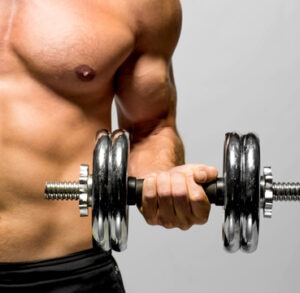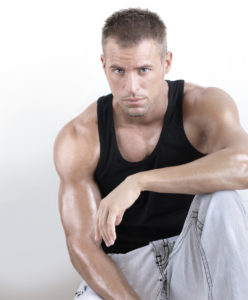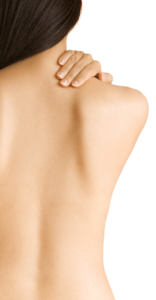What is Subscapularis Inflammation?
 The subscapularis, which belongs to the rotator cuff group of muscles in the body, is a strong muscle that helps in rotating the arm inwards. However, it can be injured easily by throwers and is difficult to treat. The subscapularis muscle starts from the shoulder blade’s underside and inserts at the front of the humerus.
The subscapularis, which belongs to the rotator cuff group of muscles in the body, is a strong muscle that helps in rotating the arm inwards. However, it can be injured easily by throwers and is difficult to treat. The subscapularis muscle starts from the shoulder blade’s underside and inserts at the front of the humerus.
A partial injury to the subscapularis muscle occurs more commonly than a total rupture. Board certified orthopedic surgeons at Thomas & Bigler Knee and Shoulder Institute provide treatments for subscapularis inflammation to patients in Las Vegas, Nevada, and surrounding communities.
Symptoms
The symptoms of an inflamed subscapularis include pain related to shoulder movement, which occurs particularly when the patient tries to raise their arms over the shoulders. A patient can figure out if they have subscapularis inflammation with the help of certain tests that reproduce pain to facilitate in diagnosing the problem.
The surgeon may ask the patient to rotate their arm inwards, against resistance, to see if their subscapularis is inflamed. Pain and tenderness are felt when pressing in on the tendon insertion on the interior of the upper arm.
Treatment for Inflamed Subscapularis
Athletes who have an inflamed subscapularis should rest until the pain subsides. Applying ice at the initial stage can reduce the inflammation and pain. Patients should consult a sports injury professional to get advice on rehabilitation.
Sports injury specialists usually prescribe anti-inflammatory medications like ibuprofen. They also use sports massage techniques to bring about relief, as well as put the patient on a strength training, flexibility, and mobility program.
People who have suffered a partial rupture can get back in training within a few weeks, as long as they look after the injury.
Diagnosis of Subscapularis Tendinitis
An orthopedic surgeon will confirm if a person has subscapularis tendinitis by evaluating the shoulder thoroughly to look for signs of abnormality in the motion range. The patient will be asked to elevate their elbows and rotate the forearms internally.
Treatment for Subscapularis Tendinitis
The treatment of subscapularis tendinitis can vary depending on how severe the inflammation may be. A subscapular tendon that is mildly or moderately inflamed can be treated with anti-inflammatory medication and applying hot or cold therapy.
A patient will be advised to rest for at least one to two weeks during treatment to help prevent further aggravation of the condition. One should be careful as the subscapularis tendon is a very important part of the shoulder joint and rotator cuff.
A tear that is accompanied by tendon inflammation has to be treated surgically, which involves exposing the tendon to identify the torn ligament. Subsequently, the doctor will isolate and remove the torn tendon of the rotator cuff and reattach the adjacent normal tendon to its normal position.
Board certified orthopedic surgeons Dr. Steven Thomas and Dr. Gregory Bigler receive patients from Las Vegas, Nevada, and other cities and towns in this section of The Sagebrush State for subscapularis inflammation treatment.
If you would like to schedule an appointment or learn more about the Knee and Shoulder Institute procedures & treatments performed by Las Vegas, Nevada board certified surgeons Steven C. Thomas, MD and Gregory T. Bigler, MD. call (702) 933-9393; Physical Therapy (702) 933-9393.

 Shoulder tendonitis is a degenerative affliction that impacts any of the tendons surrounding the shoulder joint. In general, the condition affects the rotator cuff tendons, but it can also impact the triceps and biceps tendons.
Shoulder tendonitis is a degenerative affliction that impacts any of the tendons surrounding the shoulder joint. In general, the condition affects the rotator cuff tendons, but it can also impact the triceps and biceps tendons. A growth plate fracture in case of children occurs at the end of a bone before the bone has fully matured from cartilage to hard bone. A proximal humerus fracture occurs in the upper arm, close to the
A growth plate fracture in case of children occurs at the end of a bone before the bone has fully matured from cartilage to hard bone. A proximal humerus fracture occurs in the upper arm, close to the  When the
When the  A bruised collarbone, clinically known as a clavicle contusion, occurs following a direct impact to the collar bone at the front of the
A bruised collarbone, clinically known as a clavicle contusion, occurs following a direct impact to the collar bone at the front of the  The deltoid muscle is the large muscle on the shoulder and has three parts: the anterior, posterior and the middle. The muscle performs the role of lifting the arm up sideways. The front part helps to lift the arm up forward, which is called shoulder flexion. The back part helps to lift the arm up backward, which is called shoulder extension.
The deltoid muscle is the large muscle on the shoulder and has three parts: the anterior, posterior and the middle. The muscle performs the role of lifting the arm up sideways. The front part helps to lift the arm up forward, which is called shoulder flexion. The back part helps to lift the arm up backward, which is called shoulder extension. Winged scapula is not an injury in itself, but a symptom of another condition. It occurs where the shoulder blade protrudes out on the back, rather than laying flat against the back of the chest wall.
Winged scapula is not an injury in itself, but a symptom of another condition. It occurs where the shoulder blade protrudes out on the back, rather than laying flat against the back of the chest wall. Shoulder impingement syndrome, commonly known as a swimmer’s shoulder or thrower’s shoulder occurs when the tendons of the rotator cuff become impinged as they pass through the shoulder joint. The condition may occur gradually through overuse or follow a partial tear of a rotator cuff tendon.
Shoulder impingement syndrome, commonly known as a swimmer’s shoulder or thrower’s shoulder occurs when the tendons of the rotator cuff become impinged as they pass through the shoulder joint. The condition may occur gradually through overuse or follow a partial tear of a rotator cuff tendon. Adhesive capsulitis, commonly known as frozen
Adhesive capsulitis, commonly known as frozen  An AC joint separation is an injury to the ligament that holds the acromioclavicular (AC) joint together at the top of the
An AC joint separation is an injury to the ligament that holds the acromioclavicular (AC) joint together at the top of the